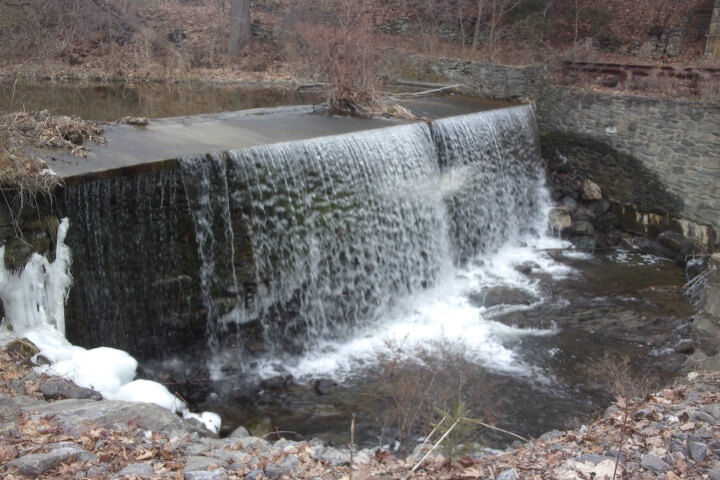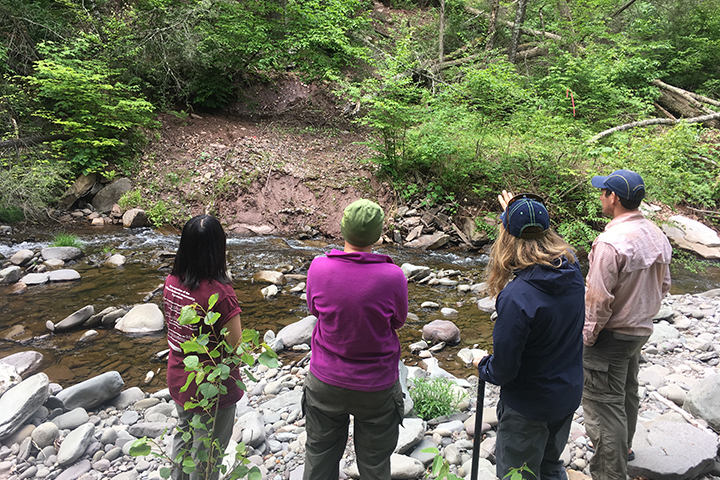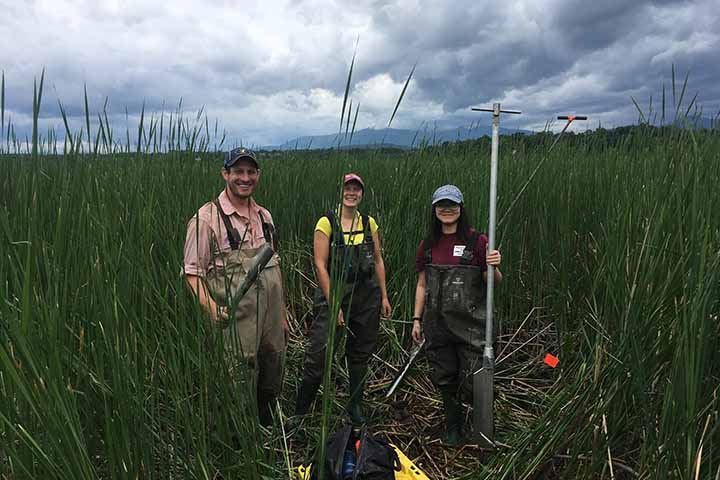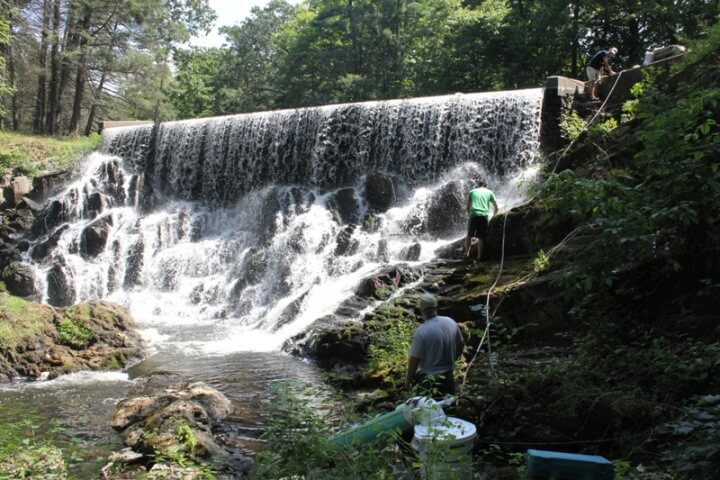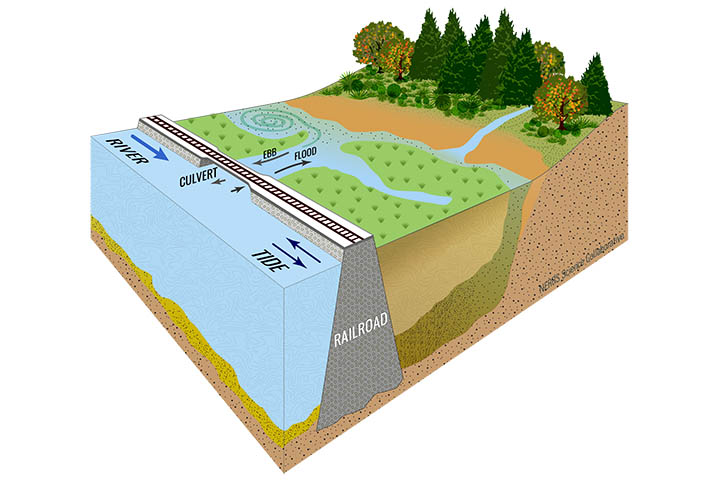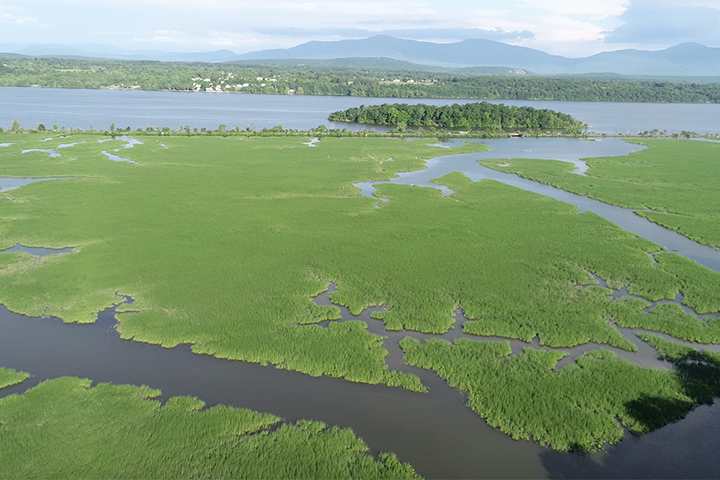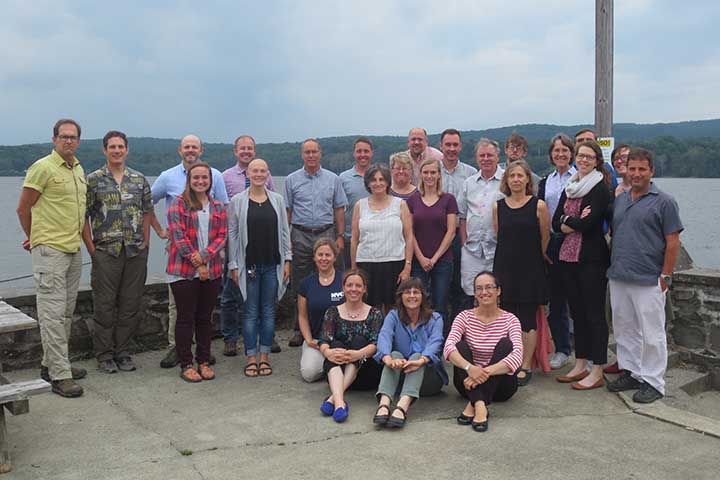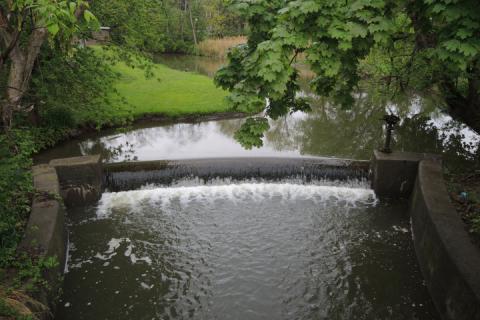
Hundreds of dams built on tributaries of the Hudson River estuary have outlived their usefulness. Removing these relic dams is a priority for the state of New York in order to improve aquatic habitat connectivity, restore fish spawning grounds, and reduce the risk of dam failure. For those who regulate and permit dam removal, questions about the fate of sediment trapped behind these dams and its potential impact on downstream habitat has encumbered the permitting process. To better understand how sediment released by dam removal in the Lower Hudson River watershed will affect the estuary, including the potential for dam-derived sediments to help offset sea level rise in tidal wetlands, the Dams and Sediment in the Hudson (DaSH) project brought together a collaborative team of scientists and stakeholders to research key questions and provide practical tools to regulators and practitioners.
The project used a multidisciplinary approach that combined field observations with an analysis of sediment transport using a proven hydrodynamic model. A broad coalition of stakeholders from state agencies, engineering firms, and environmental restoration organizations guided research and project products to maximize their utility. DaSH answered key questions about how dam removal will impact conditions in the estuary and offered surprising new findings about tidal marshes in the Hudson River valley. Results show that most dams in the Lower Hudson River watershed are not effective sediment traps, and that dam removals would have a minimal impact on both sediment supply to the estuary and tidal wetland growth. The project developed watershed assessment tools to support dam removal permitting and established an improved scientific basis to consider potential downstream benefits in regulatory decision-making.
